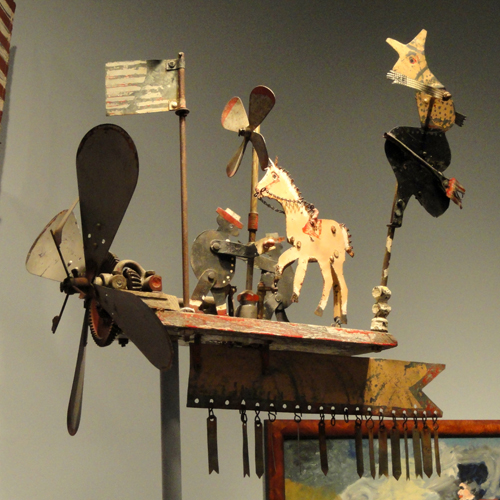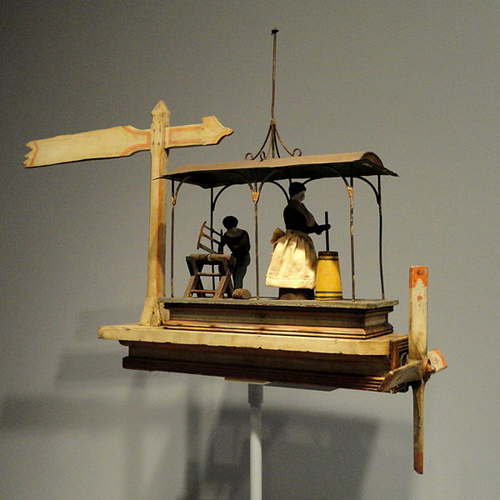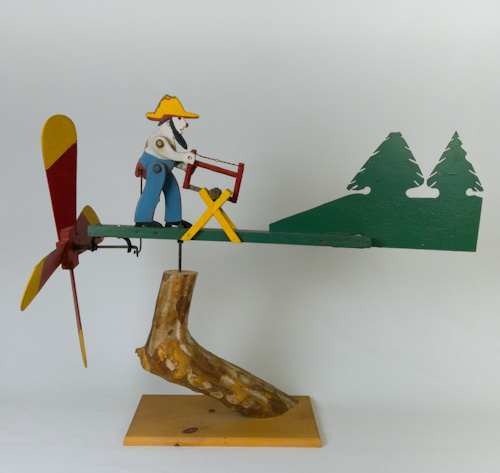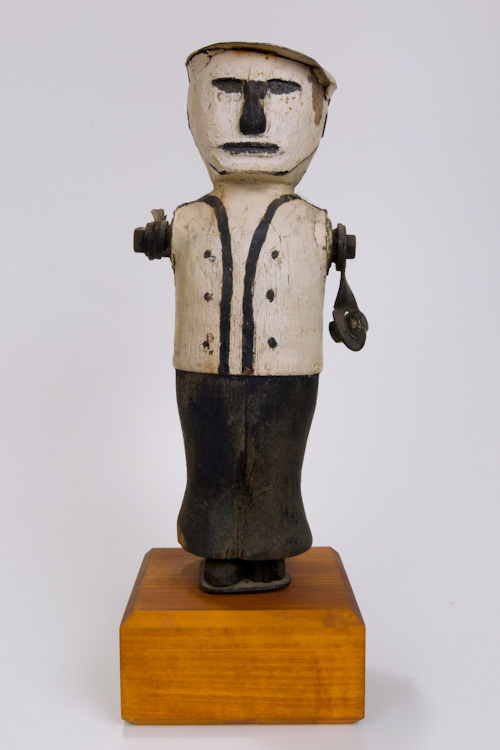Even the term whirligig escapes the serious intent of the weathervane which was originally developed as a utilitarian device to predict weather. A whirligig has always been perceived as a toy or product of someone’s whimsy for pleasure. Most whirligigs could be divided into two types, windmills or figures. Rather than silhouette style weathervanes, single figure, full body whirligigs were carved from a singular piece of wood. Of those whirligigs based on the human form, there are several genres into which they may be categorized. Their differences relate to the whirling mechanisms, the position of the arms, and how they relate to their wind catching paddles. Many figural whirligigs, in the late 19th and early 20th centuries themes and characters depicted figures of authority and significance. Included among such professions would have been soldiers, sailors, statesmen often on horses, and well dressed business and craftsmen. Whirligigs based on the windmill form are as diverse as the imaginations of their creators. This is evidenced by, among others, renowned folk artists David Butler and Vollis Simpson. Born in 1919, Mr. Simpson’s phantasmagorical whirling environment is located on his brother’s property, in Wilson, North Carolina. His vocation and interest in heavy machinery resulted in massive whirligigs, actually wind driven sculptural pieces, as tall as 40 feet. Born in 1898, New Orleans, Louisiana, self taught artist David Butler’s pieces were more often made of re-purposed remnants of tin metal, wood, and plastic with paint. Whether for utilitarian function or pure pleasure, wind driven weathervanes and whirligigs have become prized American collectibles with often staggering sales figures at galleries, estate sales, and auction houses particularly in the Ohio, Pennsylvania and open and down the East Coast.

Whirligig with Witch and Horse, 1918, by Charlie Burnham (dates unknown). Folk art in the Smithsonian American Art Museum (National Portrait Gallery), Washington, DC, USA.

Whirligig with Woman Churning and Man Sawing, 1920s, artist unknown. Folk art in the Smithsonian American Art Museum (National Portrait Gallery), Washington, DC, USA.

